In today’s review, we’ll be taking a look at the US based Rupert Neve Designs Fidelice Precision Headphone Amplifier selling for $1,195 USD.
Note: a review sample of the Fidelice Precision Headphone Amplifier was kindly loaned to us by Rupert Neve Designs, who we thank for the opportunity.
Studio pedigree
‘Rupert Neve’ – it’s a name that I first heard when watching the (truly excellent) 2013 documentary ‘Sound City’ – if you haven’t seen it yet, don’t muck around – get cracking! Not only did this doco shed some insight about how some of the most awesome albums of all time from bands like Nirvana and Fleetwood Mac came to be in that particular California recording studio, but it also made me stop and think about the gear at the other end of where the album originated (in this case the famous ‘Neve Console’). More specifically, it begged the question: do the records that you and I know and love receive a dollop of je ne sais quoi courtesy of the smarts that have gone into the signal path of the mixing gear? Sure, as audio fans you and I are generally obsessed about trying to recreate “what the artist intended” via the art of playback, but perhaps we’ll never really hear that unless we borrow a little DNA from the pro audio circuits that birthed a particular record in the first place?
In 2019, Rupert Neve Designs announced the launch of the ‘Fidelice’ range of audio gear, intended for home use by the discerning audiophile that can also appreciate the pro lineage of Rupert Neve gear. The traditionally utilitarian look of Rupert Neve’s studio gear has been mixed with more than a dash of Mid-Century design for the Fidelice range – the mahogany-accented trapezoidal design of the three models in the range: the Precision Digital-to-Analogue Converter, Precision Phono Pre-Amplifier, and Precision Headphone Amplifier would not look out of place perched in Don Draper’s Madison Avenue office next to a whisky decanter (and an ashtray, of course).
It’s an interesting piece of product marketing strategy from Rupert Neve Designs, who are clearly trying to bridge the pro > audiophile divide by leveraging the equity of the former, to appeal to the latter. At the same time, they seem to have aimed to impart a degree of luxury/lifestyle appeal in their fancily-named ‘Fidelice’ products which aren’t exactly cheap in their respective categories at $4,995 USD for the DAC, and $1,195 USD apiece for the Headphone Amp and Phono Preamp. While Rupert Neve Designs were kind enough to share a sample of all three Fidelice products with us, the Precision Headphone Amplifier will be the focus of today’s review, being more affordable than the larger and more comprehensive all-in-one ‘Precision DAC’ which we’ll be taking an in-depth look at in my next article.
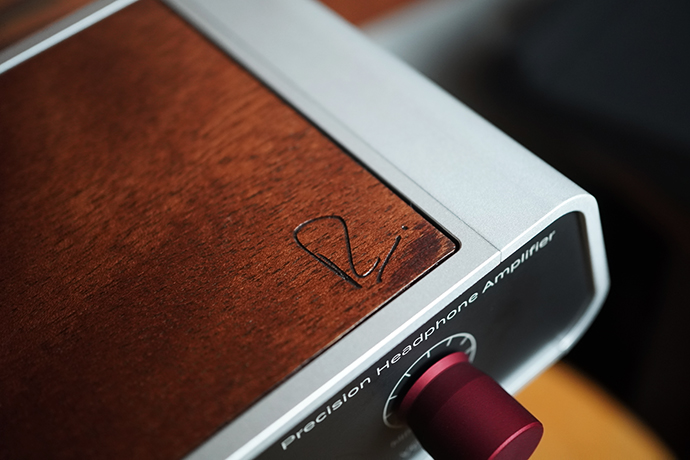
Made ‘precisely’ with headphones in mind
The Fidelice Precision Headphone Amplifier can boast some impressive pro lineage, apparently being based on the headphone circuit from the 5060 Centerpiece Desktop Mixer. Headfonia readers might be more familiar with the more recent Precision Headphone Amplifier (sans the ‘Fidelice’ moniker) from Rupert Neve Designs, whose topology and spec-sheet are nigh-identical to the new model from the Fidelice range which suggests the new model is somewhat of a cosmetic ‘nip/tuck’ makeover along with a re-brand and a more-than-nominal price increase (up from +/- $699 USD). Speculation on its origins aside, the Fidelice Headphone amp is still very much a streamlined, all-analogue affair: music is fed into it from one of its three analogue inputs, and is fed into your headphones via a traditional 6.3mm full-sized jack. There are no pre-amp facilities, no balanced outputs, and nothing digital whatsoever going on here either – you’ll need to add your music source of choice upstream to make use of the Fidelice Headphone amp.
While it does look like a pretty fancy little mahogany-adorned box, the pro audio heritage of the Fidelice Headphone amp is still quite apparent. The marketing copy on RND’s website explains they designed it because “For much pro audio and high-fidelity equipment, the headphone output is an afterthought”. This implies that the Precision Headphone Amplifier (PHA) is designed as an upgrade for the built-in headphone outputs commonly found within studio and integrated hifi gear, rather than being out-and-out aimed at the audiophile market, which is normally catered to by far more capable and feature-laden devices. But, seeing as you and I are both music listening and headphone fans: how does the PHA’s impeccable lineage stack up when it comes to driving a wide range of audiophile headphones?
On paper, the PHA is a fairly modest device both in terms of features and power. On the subject of power, the PHA is capable of ‘only’ outputting within the milliwatt range with a maximum of 300mW available on tap at 44 ohms. While we are used to much more headroom than this from desktop headphone amplifiers, this should be more than enough to get the lion’s share of headphones up to deafening levels in no time at all.
The key specifications of the PHA are as follows:
MAXIMUM INPUT LEVELS
- “A” XLR I/P: +22.8 dBu @1kHz
- “B” RCA I/P: +14.7dBu @1kHz,
- “C” 3.5mm I/P: +3.3dBu @1kHz
OUTPUT POWER
- As measured with typical headphones, Z=44 Ω: 3.617 VAC RMS @1kHz = 300mW RMS
- 16 Ω typical Load: 1.933 VAC RMS @1kHz = 230mW RMS
- 150 Ω typical Load: 5.108 VAC RMS @1kHz = 175mW RMS
OUTPUT IMPEDANCE
- .08 Ω @ 1KHz, 16-150 Ω load, 0dBu input
FREQUENCY RESPONSE
- +/- .2dB from 10Hz to 120KHz
NOISE
Measured with typical headphones, Z=44 Ω, BW 22Hz – 22kHz
- “A” XLR Input: -101.9dBV,
- “B” RCA Input: -100.9dBV
- “C” 3.5mm Input: -88.8dBV
DIMENSIONS
- 6.5” wide x 4.6” deep and 1.9” tall
Design and features
The Fidelice Precision Headphone Amplifier is not exactly gargantuan, being only some 20cm wide, 10cm deep, and 6cm tall – not much larger than the entry-level gear from the likes of Schiit, Topping et al. However, it is quite a striking-looking device that certainly warrants a second glance courtesy of its signature trapezoidal design, which it shares with the other products in the ‘Fidelice’ range. The PHA’s outer casing is made from solid, brushed aluminium which gives it a confidence-inspiring sense of heft, while its front and back fascias are made from a chalkboard-like matte-black plastic that simply loves to pick up smudges and fingerprints. The showpiece of the PHA is without question its lacquered mahogany ‘roof’, which also bears the engraved initials of Mr. Rupert Neve himself – a rather nice touch.
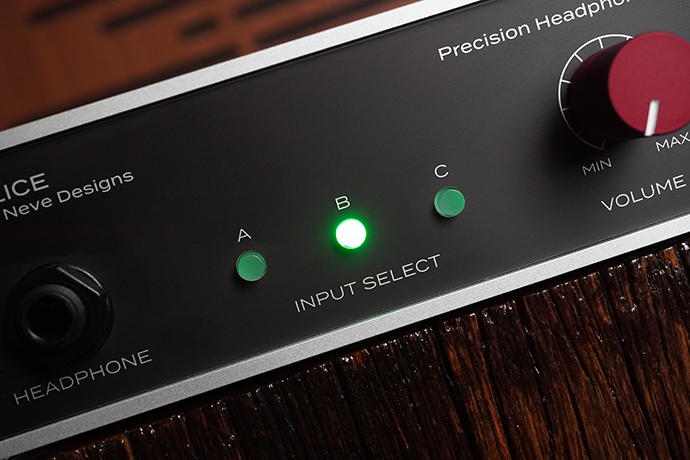
On the PHA’s front panel, we have a standard full-size 6.3mm single-ended jack – standard fare for studio applications, balanced cables need not apply. Next to the jack, the PHA has three input buttons marked ‘A’, ‘B’, and ‘C’. Offering three analogue inputs is extremely generous for a headphone amplifier, especially one as compact as the Fidelice PHA. To switch between inputs, one simply ‘clicks’ the input buttons, which are backlit with green LEDs which are as bright and lurid as Luke Skywalker’s lightsaber from Return Of The Jedi. Seriously, they’re that bright. Rounding out the controls on the front panel is a crimson-coloured volume knob, with a clearly-marked level indicator.
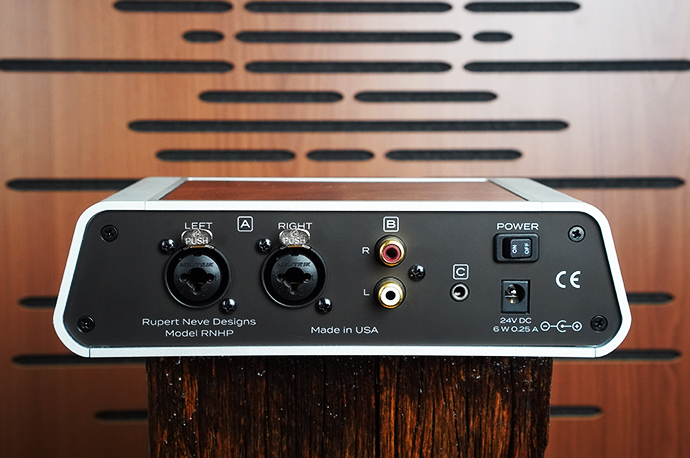
Spinning around to the back, the PHA has not only three separate analogue inputs, but also has facilities for no less than four different flavours of input. Input ‘A’ has combo jacks that allow you to connect both balanced XLR and 6.3mm TS inputs – a definite ‘nod’ to pro users. But to note, balanced signals will naturally be converted to single-ended ones via the headphone jack. Input ‘B’ provides you facilities for standard RCA inputs, while input ‘C’ is a simple 3.5mm TRS jack for use with devices like laptops, smartphones and the like. You might have noted from the PHA’s spec sheet that each of the inputs has different maximum input gain levels – the gain level from the 3.5mm being significantly higher than the RCA, and even more so than the XLR. This has presumably been designed to accommodate the lower output levels from source devices that have a 3.5mm output, while studio gear outputs at a much higher voltage level. This does have an impact when it comes to clipping and distortion, which I’ll touch on later. Lastly, the PHA is powered by a 24V ‘wall wart’-style power supply, and power is switched on/off via a rear-mounted switch.
Click over to page 2 to continue the review.






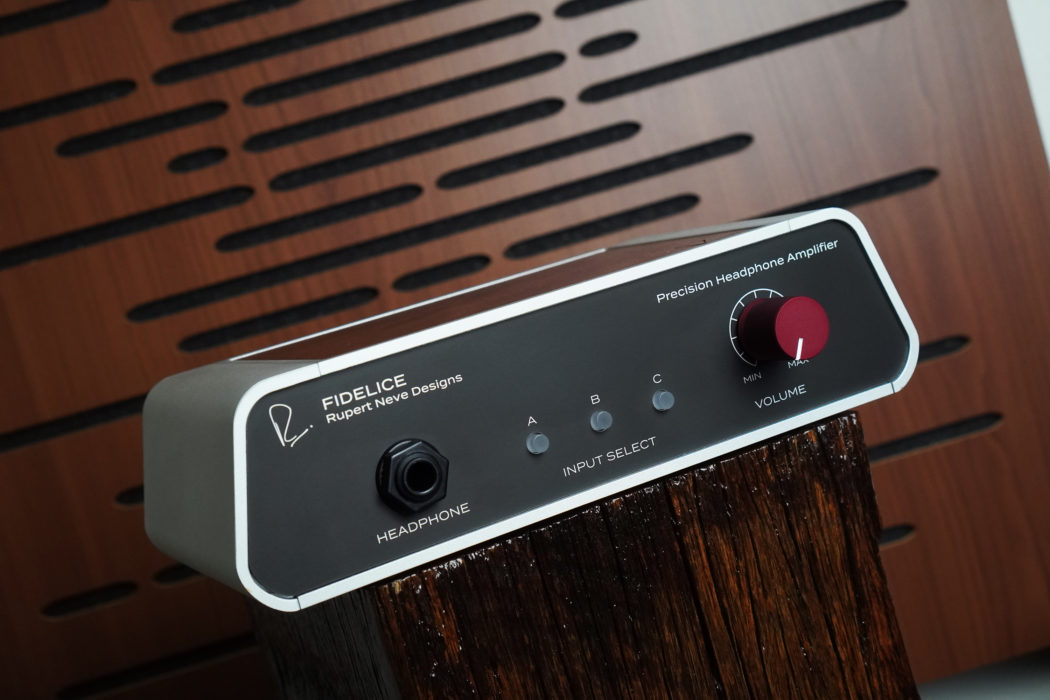

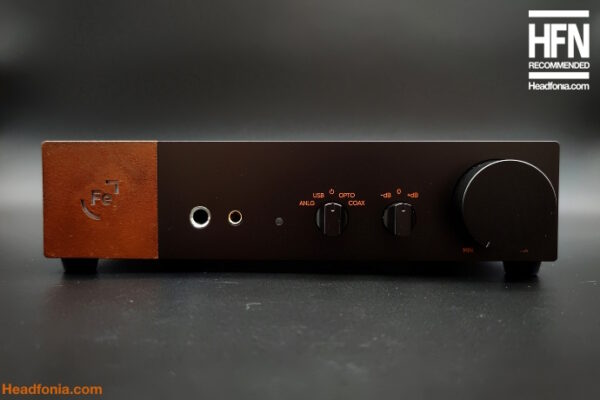
Booker
I actually briefly had one of these earlier this year. Like you, I found it had a noise with low impedance headphones – like a high-pitched whine immediately on connection, regardless of whether music was playing or not, and the dealer accepted a return and refund (after some haggles). I thought it might be AC noise and wondered whether it was our apartment or whether a linear power supply would help, but I didn’t want to have to buy a power supply just to trouble-shoot the issue. From your review it sounds like it’s a common problem 🙁
foubarre
I own the non Fidelice RNHP amp, is there anything better on this Fidelice besides the fancy case?
Matty Graham
They appear to be pretty similar underneath the hood, but I’m not about to do a teardown on it!
Michael Montoya
I am very satisfied with the sound quality of this amplifier. It was easy to set up and it’s a great sounding device for my music collection. I’m able to crank up the volume without any distortion or drop in sound quality, which is always good.
William Kinsman
I believe that it is identical to the RNHP that is about half the price of the Fidelice. I thought that the Fidelice version had balanced outputs, but otherwise the specifications were exactly the same, but this is insane.
rds
reading between the lines this looks like the $699 amplifier with a $500 uncharge. They even appear to be using the same LED and control circuitry. It does look very very nice though.
Pan
They exhibited this amp at AES2019. I was at their booth and asked them what difference there is between this and the RNHP. They pretty much said there is no difference performance wise and only an aesthetic uplift (the dude even said they didn’t touch the circuits at all, and they only increased gain a little bit). Props to them for being frank so I don’t have to shell out one grand for the exact same amp I just bought.
Roman Koschar
I am a big fan of the Pro Audio stuff that Rupert Neve designed. Be it the original Neve consoles (which are now made under the name AMS Neve) or the Rupert Neve Designs stuff. I can attest a special quality to these products that can be distinguished by ear. It is possible to discern the Neve sound.
The trick (at least one of them) is that Rupert Neve uses transformer coupled designs in all of his products which gives them a unique sound signature and accounts for the price which is higher then most other Pro Audio gear.
However as unique as this approach might have become in the Pro Audio field where Number of Channels per $ is king it is still pretty common in HiFi. Every tube amp on the planet uses this design and so do many high priced transistor amps (Like McIntosh for example).
So when RND announced a line of HiFi gear I was sceptical. Not least because there weren’t any reviews. And now that I read the review of the headphone amp I see my suspicions confirmed. RNDs venture on the HiFi market seems to be a marketing ploy and Rupert Neve himself would never have approved of such a strategy or a product line that delivers mediocre performance for the price.